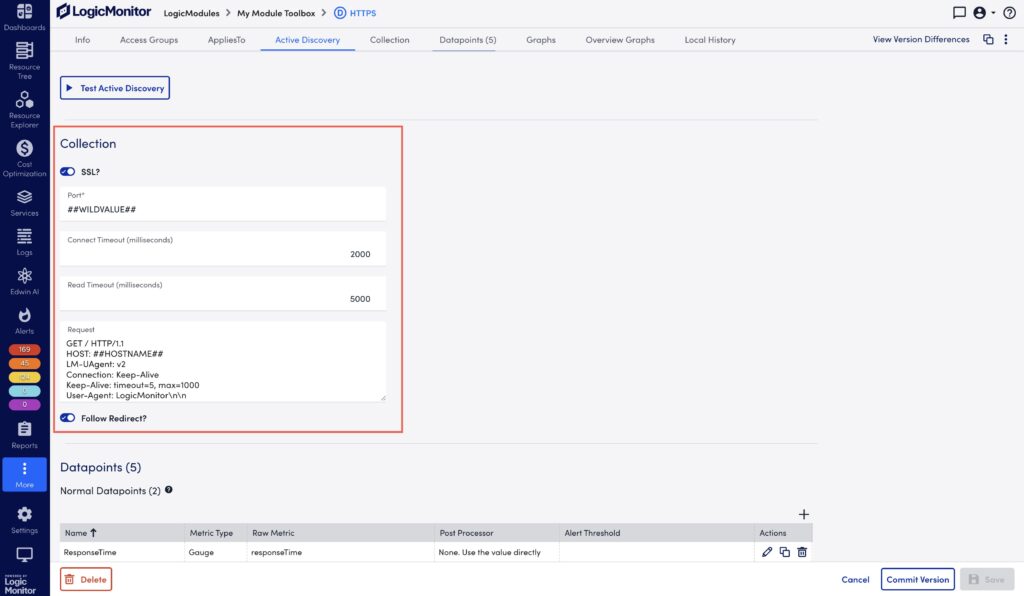Available Tokens for Data Collection
Last updated - 16 September, 2025
Tokens collect data from the Collection section of a DataSource. During data collection, the tokens are replaced with dynamic information.
Recommendation: Use the format ##TOKEN## to add tokens and avoid using #TOKEN#, ##TOKEN#, or TOKEN formats.
List of Tokens Used for Data Collection
In the Collector Attributes, Active Discovery, and Datapoints sections of each DataSource definition, the following tokens are available:
| Token | Description |
##AGENTROOT## | The file system path where the Collector is installed. |
##HOST## | The naming convention by which your device is added into monitoring. |
##HOSTNAME## | The host name of the device that collection is being applied to. |
##JAVAHOME## | The path to the JAVA binary that the Collector uses. |
##LIBPATH## | The path to the lib directory of the Collector, where external scripts are stored. |
##POLLINTERVAL## | The polling period (that is, the collection interval) in seconds, as defined in either the DataSource definition or in the custom properties of a resource or resource group (if a custom value has been created to override the default DataSource). |
##RESOURCEPROPERTYNAME## | The name of resource or device property. Properties associated with a device or resource are available as tokens. |
##WILDALIAS## | The descriptive identifier of each instance of a multi-instance DataSource. |
##WILDVALUE## | The unique identifier of each instance of a multi-instance DataSource, as reported by Active Discovery or created manually. For example, the Name property of a member of a WMI class, or the unique index on an SNMP object in a tree. |
For more information, see Tokens Available in LogicModule Alert Messages.
Token Usage Example in HTTPS DataSource
To understand token usage, consider the Collection section of the HTTPS DataSource.

This example consists of two tokens:
##WILDVALUE##—At runtime, the token is replaced with the discovered port value. This DataSource then tests and collects data across multiple ports.##HOSTNAME##—At runtime, the token is replaced with the resource hostname or IP address. This ensures that the HTTP request is directed to the correct target.
The tokens together enable dynamic resolution during Active Discovery and collection, without the need for manual configuration.

